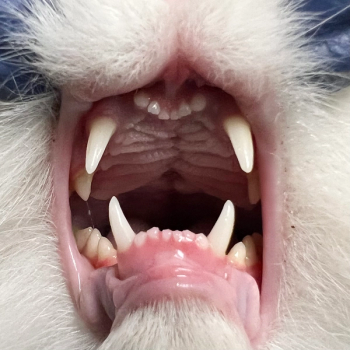
Control of postamputation bleeding using aminocaproic acid
This study in retired racing greyhounds offers hope for breeds at risk for postoperative bleeding.
Why they did it
Sighthounds have physiological differences from other breeds, such as high hemoglobin concentrations and packed cell volume; low platelet, white blood cell, and neutrophil counts; and low total serum protein concentrations. Studies have found that retired racing greyhounds may also have a higher than normal risk of postoperative bleeding, which is thought to be due to a defect in the clot maintenance (fibrinolytic) phase of coagulation. Thus, affected dogs may have normal results in preoperative hemostasis assays. Given its documented effects as an inhibitor of fibrinolysis, epsilon aminocaproic acid (EACA) was evaluated in this study for its efficacy as a hemostatic agent in retired racing greyhounds undergoing limb amputation for appendicular bone tumors. Appendicular osteosarcoma is the most prevalent cancer reported in retired racing greyhounds and the most common cause of death or euthanasia. Amputating the affected limb and administering chemotherapy is the often-recommended treatment.
What they did
The authors retrospectively evaluated records for 46 retired racing greyhounds that underwent amputation between 2003 and 2008 for treatment of primary appendicular bone tumors. Rates of postoperative bleeding were assessed, including the site of bleeding and whether administration of blood components was required. Tumor location was included as a variable since rear limb amputations appeared to be associated with more severe bleeding.
The dogs were divided into two groups based on postoperative bleeding. Group 1 included 13 dogs that developed bleeding 48 to 72 hours after surgery, and Group 2 included 33 dogs with no postoperative bleeding. Preoperative hemostasis panels were performed and the results were found to be normal in 39 of 46 dogs; only one of the seven dogs with no hemostasis testing developed postoperative bleeding. Complete blood counts and serum chemistry profile results were normal prior to surgery in all dogs.
What they found
Forty of the 46 dogs received either EACA or fresh frozen plasma (FFP) or both for the prevention of postoperative bleeding. The authors found that bleeding was 5.7 times more likely among dogs that did not receive EACA when adjusting for whether FFP had been given (P = 0.047). EACA was administered to 25 dogs and was given as an initial intravenous dose (500 to 1000 mg total or 15 to 40 mg/kg) immediately after surgery followed by 500 to 1000 mg of EACA orally every eight hours for five days. Four of these 25 dogs developed bleeding complications; two had received both EACA and FFP.
Take-home message
Preemptive administration of EACA after limb amputation surgery in retired racing greyhounds may decrease the rate of postoperative bleeding complications.
Marin LM, Iazbik MC, Zaldivar-Lopez S, et al. Retrospective evaluation of the effectiveness of epsilon aminocaproic acid for the prevention of postamputation bleeding in retired racing Greyhounds with appendicular bone tumors: 46 cases (2003-2008). J Vet Emerg Crit Care 2012;22(3):332-340.
Link to abstract:
Newsletter
From exam room tips to practice management insights, get trusted veterinary news delivered straight to your inbox—subscribe to dvm360.






